-
Products
TechnologyManaged Services
- Resources
- Pricing
- Company
10 notorious examples of enterprise reputation crisis management: the challenge types, recovery strategies employed, and end results for each company.
.png)
In the unforgiving world of doing business in 2024, brand reputations are not just hard-fought and earned, but shockingly easy to see damaged. Often at a moment's notice and by anyone in possession of a smartphone and an axe to grind.
For enterprise-sized companies, the stakes are highest; a single (perceived) public misstep can give rise to scrutiny, investor distrust and customer loyalty downsides. However, corporations across industries have shown an uncanny ability to not only weather reputational storms, but emerge from challenges even stronger than before.
What can we learn from those who have navigated devastating issues in the past? Let’s look at the following 10 scandal examples, PR disasters and public disgraces:
Definition: The process of protecting and restoring a company’s public image during challenging situations. For large organizations, reputation is one of the most valuable assets, and even a single incident can have widespread consequences. Here's a quick breakdown of what enterprise reputation crisis management may entail:
By addressing these key areas, enterprises can not only reduce immediate damage but also strengthen their long-term corporate reputation. Now, let's dig into some of the most impressive examples of reputation crisis mitigation.
These 10 legendary instances of enterprise reputation management crisis recoveries (some of which predate the internet but are no less insightful) can serve as a blueprint for recuperation and ongoing corporate perception improvements. For each, we'll look at the specific type of reputation challenge, the strategies employed to turn the negative tide, and the final results of the rehabilitation effort.
Then, stick around for a summary of the the common reputation recovery strategies employed by each company.
The Ford Pinto became synonymous with product liability failures following revelations that the compact car's design flaws could lead to deadly fires. Despite the largely successful efforts made by the manufacturer to turn the public's Pinto perception around, the original model (introduced in 1970) is still the brunt of popular culture jokes 54 years later.
Challenge: Ford faced a harrowing mix of Pinto engineering controversies that sent its reputation spiraling. These included the vehicle bursting into flame after mild fender benders, customer injuries and even deaths. Their 24-month design rush to create a subcompact car for under $2,000 (the average new model takes around 48 months) is usually blamed for the debacle.
Strategies: Coming clean about the faults - including the poorly chosen location of the Pinto's fuel tank - extensive recall and repair efforts - redesign with enhanced safety measures.
Results: Ford’s transparent approach, willingness to accept blame, and corrective redesign actions - which led to not only a better Pinto but to improvements on other models - showcased a commitment to safety and reliability, leading to a significant but gradual increase in brand trust.
When Tylenol packages were tampered with in 1982, resulting in multiple deaths before a nationwide recall was ordered, J&J responded with a speed and decisiveness that ultimately changed safety standards worldwide. This tragedy is an early example of the ‘tough on safety' and tamperproof product concepts that would become commonplace for over-the-counter medications.
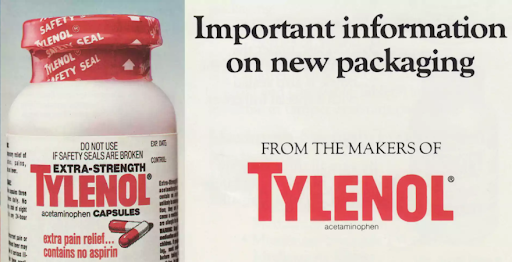 Image Source: (JNJ)
Image Source: (JNJ)
Challenge: While never formally charged, the FBI still believes that the main suspect, James Lewis, was responsible for 7 deaths. The poisonings prompted legal, ethical, and (predominantly) safety concerns, as the potential for mass life-threatening implications became obvious, threatening to wipe out Tylenol’s reputation overnight.
Strategies: Full product recalls after the first death - extensive and transparent communication - lengthy internal investigations - and the introduction of tamper-evident packaging.
Results: J&J’s swift and compassionate response not only saved Tylenol’s reputation but served as a benchmark for crisis management across industries, establishing it (some say) as a model of corporate responsibility. The efforts of the FBI, however, are remembered less fondly by relatives of the poisoning victims.
The once burgeoning fast-casual restaurant empire was plunged into an E. coli outbreak that was linked to several of its establishments over the course of 3 years beginning in 2015. While none of the affected diners died, 19 cases of E. coli were attributed to food purchased at Chipotle. The most damning detail may be that the outbreak was spread across 7 States!
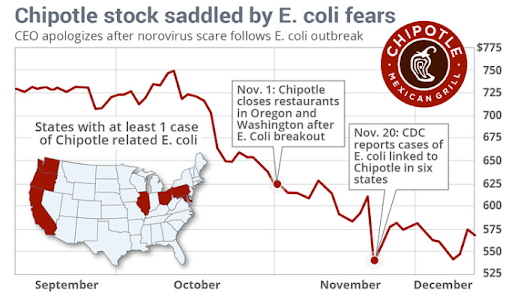 Image Source: (CDC / Marketwatch)
Image Source: (CDC / Marketwatch)
Challenge: Spiked public health concerns related to the brand, and a high number of widespread victims, dealt a huge blow to the restaurant chain's reputation and consumer confidence.
Strategies: Addressing health concerns with new food safety measures (including ingredient changes and improved sanitation protocols) - a costly public relations and ad campaign effort. Their willingness to pay a 25 million dollar federal fine didn't hurt either.
Results: Chipotle’s response stopped the hemorrhaging of customer trust and positioned the corporation as a leader in conscientious food sourcing and preparation. The brand is stronger than ever, with the outbreaks all but forgotten.
Coke’s 1999 entry into the bottled water market was met with ridicule when it was revealed some of its water sources for Dasani were just ordinary (albeit additionally purified) tap water. A far cry from the magical mountain springs often implied in the marketing, Coke wasn’t the only big brand exposed and negatively affected - resulting in a public relations nightmare for a group of H20 purveyors in the early 2000s.
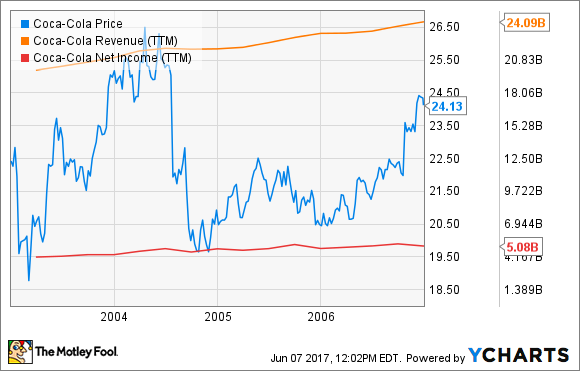 Image Source: (The Motley Fool)
Image Source: (The Motley Fool)
Challenge: Damaging product revelations, in part due to rushed entry into a new market, brought Coke’s brand integrity into question - not only for bottled water but also their classic carbonated offerings.
Strategies: Rebranding efforts with a focus on "purifying" (see what we did there?) product image - clearer communication on water sourcing and treatment - initiatives to reduce environmental impact.
Results: With these recalibrations, even though a lot of stock was sold in the panicked early days of the scandal, the fallout was nowhere near as damaging as risk assessments assumed. Coke managed to regain consumer confidence and stake a claim as a responsible player in the bottled water space. Their market share continued to grow steadily overall.
The 1989 Exxon Valdez oil spill in Alaska was an environmental catastrophe that turned Exxon from a respectable top-tier oil brand into a publicity pariah. After the tanker ran aground as a result of "pilot error due to sleep deprivation,” 11 million gallons of oil leaked into Prince William Sound.
With our modern focus on climate change and recovery, this reputation destroyer is still frequently mentioned 35 years later. And why not? 1,300 miles of shoreline were covered, with a devastating impact on sea life, wildlife, and the local Alaskan communities. Definitely one of the more serious examples on our list. So, did they recover? And did they deserve to?

Photo by Benjamin Elliott on Unsplash
Challenge: Widespread environmental damage led to a severe negative impact on the company's reputation (second only to the impact on birds, fish - and even whales), which was once a standout in the oil industry and consumer perception. It was bad.
Strategies: Landmark oil spill cleanup and recovery effort - revamping of marine safety protocols and training (especially in terms of crew fatigue and manning policies) - long-term funding commitments for wildlife protection and habitat restoration.
Results: Despite strong initial corporate and public doubts, Exxon (now ExxonMobil)’s consistent investment and innovation in safety procedures helped it regain a level of credibility with consumers and the international community. While they'll forever be linked to this terrible event, Exxon did many of the right things to take environmental responsibility, and can therefore be considered for a list like this.
A series of product recalls, due to multiple unintended acceleration events (first exposed by a 2009 ABC News investigation), caused a dent in Toyota’s previously rust-proof reputation based on their commitment to quality and safety. Prompted by consumer complaints after over 200 related accidents, and 2,000 total reported occurrences, Toyota initially blamed the issues on Camry, Prius and Lexus floor mats interfering with gas pedals. Consumers and safety analysts alike refuted that claim, making an already bad situation worse as Toyota then seemed disingenuous, careless, or both.
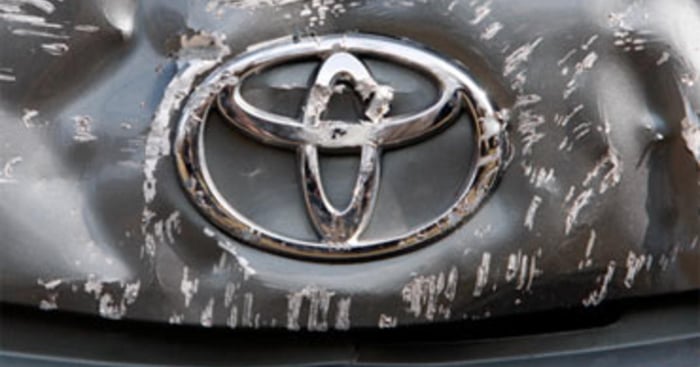 Image Source: (CBSNews)
Image Source: (CBSNews)
Completed in 2010, a National Highway Traffic Safety Administration study estimated that Toyota’s rogue acceleration defects were likely responsible for up to 89 deaths. The culprit was eventually revealed as the gas pedal design itself, and Toyota was hit with a $16.4 million fine for its slow response.
Challenge: Unexpected recalls damaging Toyota's engineering excellence and customer focus perceptions, attempts to explain away a serious issue without investigating all potential root causes.
Strategies: Eventual comprehensive recall efforts - proactive assistance for affected customers - an overhaul of quality control mechanisms.
Results: Toyota’s (again, eventual) remediation and redesign efforts were credited with rebuilding consumer loyalty, press perception and automotive industry respect. This serves as an example of how important it is to perform due diligence before rushing into a lazy PR strategy.
Samsung’s Galaxy Note 7, while popular when released in 2016, soon faced serious public relations challenges. The issue wasn’t due to a short battery life - the batteries simply had a tendency to explode in some cases or set themselves ablaze in others. It brought an unwelcome new angle to the programming idiom “halt and catch fire” from the earliest days of computing, to say the least.
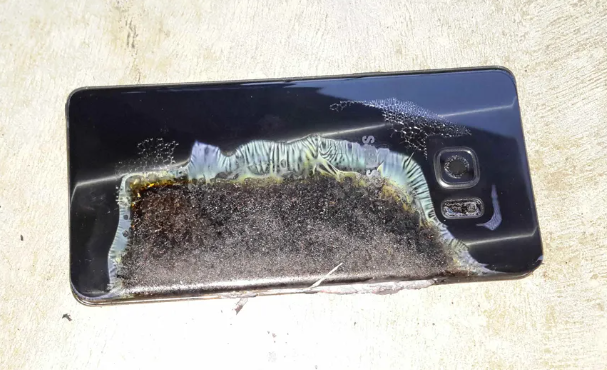 Image Source: (Crushader/Reddit)
Image Source: (Crushader/Reddit)
The cause, of what CNet referred to as “one of history's worst tech product recalls,’ was eventually revealed by the manufacturer a year after the initial nightmare - yes, the batteries were to blame. But not just the one originally shipped with the Note 7 - the recall replacement batteries, from a third-party manufacturer, could catch fire in your front pocket too!
Challenge: The widespread issue not only led to a global recall, it also caused consumer safety concerns and financial losses. The original battery had a design flaw, and the replacements suffered from a rushed lack of safety measures while trying to meet demand.
Strategies: Multi-tiered global recall - implementing a PR strategy that made improvements and accountability front and center - enhanced safety testing - changes to third-party suppliers.
Results: By addressing the problem head-on with new and improved safety protocols, Samsung underscored its commitment to consumer welfare and was able to move past the issues (and resulting jokes), albeit with substantial financial setbacks.
While there are now lots of user-submitted video examples of airplane hijinks uploaded every week, back in 2017 a video of a passenger being forcibly removed from a United flight wasn’t commonplace and it went viral, sparking outrage and negative publicity. The flier in question, a doctor who was the unlucky victim of the flight being overbooked, wasn’t exactly cooperative or understanding - far from it - and can arguably take a little blame for the clip becoming as upsetting as people found it.
Challenge: The incident led to a wave of negative social media attention, highlighting the airline's customer service (or maybe just their inaccurate booking system) woes. Regardless, examples like this weren’t an everyday occurrence, and United had a lot of explaining to do.
Strategies: Public apologies - changes in onboard conflict resolution training - a revamp in handling overbooked flight policy.
Results: The genuine response and regret shown by United helped to calm some of the public’s anger, though the airline continued to face backlash for instances of poor customer service.
In 2013, Lululemon faced an image issue when it had to recall 17% of its women's black yoga pants due to the fabric being too “sheer”. In other words, when bending at a certain angle, the garment became semi-see through leaving little to the imagination. The recall quickly turned into a full-blown crisis as customers were outraged, the company's shares took a hit, and Lululemon got into a public spat with its supplier.
 Image Source: (Brea Souders | Bloomberg)
Image Source: (Brea Souders | Bloomberg)
Challenge: “Tight” inventories meant the recall resulted in a shortage of yoga pants for online and retail stores, and competitors threatened to gain market share as customers went elsewhere. Lululemon's co-founder, Chip Wilson, also made comments blaming women's bodies for the issue, further angering customers and exacerbating the situation.
Strategies: Customers were able to return the sheer pants for a full refund - Chip Wilson stepped down as chairman of the board - manufacturing fabrics were made more modest - and product testing became more comprehensive.
Results: While Lululemon’s implementation of better risk management practices, to prevent future quality control issues, proved to be a long-term benefit, it definitely took a hit as a result of the peekaboo pants. The company bounced-back quickly though, when after an initial stock price drop of 6%, it rose 24% over the two months that followed - leaving them in a stronger position than prior to the hullabaloo.
Domino’s wasn’t laughing in 2009 when employees Kristy Hammonds and Michael Setzer posted a “prank” video in which they were preparing sandwiches in the kitchen of a North Carolina location. What separated this particular prank from the harmless variety? Setzer made sure that multiple cheese slices were inserted into his nose before being placed on the sandwiches, and the media figured out Hammonds was a sex offender with a history of assault charges. Oh, and yes - said sandwiches were then allegedly delivered to customers.
The pair were eventually charged with a “food contamination” felony. Within 48 hours their salacious cinematic submission had been viewed over a million times on YouTube - and the damage to the brand was done. A week after the video, sales at Domino's restaurants in NC fell by 50%, resulting in 600 employees losing their jobs. Humor is often in the eye of the beholder; loyal customers were not amused, trustworthy staff had their livelihoods ruined, and the unsanitary practices now associated with Domino's resulted in a massive PR crisis.
Challenge: Assuring disgusted diners that the employee shenanigans were a one-off, mitigating significant losses in food sales, and addressing concerns about food safety, background checks and hiring practices.
Strategies: Immediate disclaimers, public apologies, the implementation and publicizing of new stringent food preparation processes, delivery checks and staffing procedure revamps. A lengthy video apology from then-CEO, Patrick Doyle, didn’t hurt either.
Results: Domino's counter-response to the revolting foolishness resonated with the public, who appreciated their direct approach to resolving the internal issues thus ensuring it didn’t happen again. Unfortunately, it eventually did happen again in early 2017. Still, in the years since the first episode in 2009, the public has become more used to employee sabotage videos and is now a little more forgiving.
If these 10 organizations recovered from their public image disasters, it could be argued that almost any corporation can. Common recovery strategies seen throughout the above list of scenarios include:
These 10 infamous examples can serve as a guide for corporate reputation crisis recovery or even a set of cautionary tales which may help anticipate potential disasters before they happen. By studying these cases, companies can better equip themselves to protect and enhance the reputations of their enterprises, ensuring they weather any storm that comes their way.
A digital marketing dinosaur, my SEO career began in 1999 at one of Boston's first digital marketing agencies. Prior to becoming Widewail's Director of Search I had a long focus on GMB, reviews and local organic visibility for automotive dealerships in competitive locales. Regardless of a specific industry, this decade of experience was the perfect precursor for a role supporting our innovative Engage and Invite services. Originally from Canada, I enjoy hockey, Frank Sinatra, writing on a variety of subjects, old movies - and am the proud parent of a geriatric Boston Terrier. Customers, peers, or anyone with online review-related questions are encouraged to contact me, anytime.
Bite-sized, to-the-point, trend-driven local marketing stories and tactics.
Automated Review Generation
Video Testimonial Generation

Maintain Accurate Listings

Private Surveys
Review Response Managed Services
Social Media Engagement Services
©Widewail 2025.
U3GM Blog Post Comments